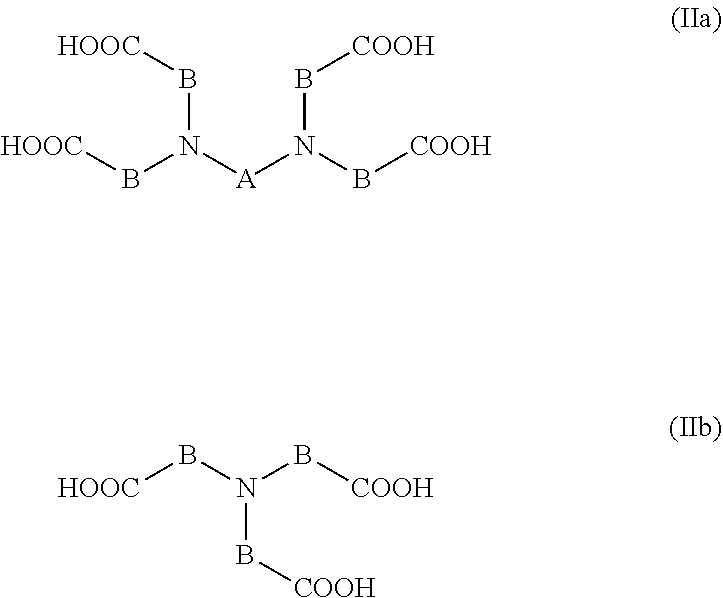Copolymers as additives for fuels and lubricants
a technology of additives and copolymers, which is applied in the direction of fuels, machines/engines, mechanical equipment, etc., can solve the problems of engine performance deterioration engine performance deterioration,
- Summary
- Abstract
- Description
- Claims
- Application Information
AI Technical Summary
Benefits of technology
Problems solved by technology
Method used
Image
Examples
preparation examples
B. Preparation Examples
Synthesis Example 1
[0251]Initial charge: 131.43 g of C20-C24 olefin and 154.29 g of Solvesso® 150
Feed 1: 43.50 of maleic anhydride (heated at 80° C.)
Feed 2: 25.08 g of lauryl acrylate
Feed 3: 2.31 g of di-tert-butyl peroxide dissolved in 13.07 g of Solvesso® 150
In a 1 liter pilot plant stirrer, the initial charge is heated up to 150° C.
Feeds 1, 2 and 3 are metered in within 3 hours and then polymerization is continued for 1 hour.
[0252]A reactor (1 liter pilot plant stirrer) was initially charged with 131.43 g of C20-C24 olefin and 154.29 g of Solvesso® 150. The mixture was heated to 150° C. under a nitrogen stream and while stirring. To this were added, within 3 hours, 2.31 g of di-tert-butyl peroxide dissolved in 13.07 g of Solvesso® 150, molten maleic anhydride (43.50 maleic anhydride, heated at 80° C.) and 25.08 g of lauryl acrylate. The reaction mixture was stirred at 150° C. for a further hour and then cooled down.
[0253]The product has a solids content of ...
use examples
C. Use Examples
Use Example 1: DW10 Na Soap IDID Test (Clean-Up)
[0256]To examine the influence of the additives on the performance of direct injection diesel engines, as a further test method, the IDID engine test, in which the exhaust gas temperatures in the cylinders at the cylinder outlet were determined on cold starting of the DW10 engine, was. A direct injection diesel engine with common rail system from the manufacturer Peugeot as per test method CEC F-098-08 was used. The fuel used was a commercial B7 diesel fuel according to EN 590 from Aral. To artificially induce the formation of deposits, 1 ppm by weight of sodium naphthenate and 20 ppm by weight of dodecenylsuccinic acid were added thereto in each case.
[0257]Similarly to the CEC F-98-08 method, the engine power is measured during the test. The test consisted of two parts:
I. Dirty-up:
[0258]The test was conducted without addition of compounds according to this invention. The test was shortened to 8 hours; the CEC F-98-08 me...
PUM
| Property | Measurement | Unit |
|---|---|---|
| Fraction | aaaaa | aaaaa |
| Power | aaaaa | aaaaa |
Abstract
Description
Claims
Application Information
 Login to View More
Login to View More - R&D
- Intellectual Property
- Life Sciences
- Materials
- Tech Scout
- Unparalleled Data Quality
- Higher Quality Content
- 60% Fewer Hallucinations
Browse by: Latest US Patents, China's latest patents, Technical Efficacy Thesaurus, Application Domain, Technology Topic, Popular Technical Reports.
© 2025 PatSnap. All rights reserved.Legal|Privacy policy|Modern Slavery Act Transparency Statement|Sitemap|About US| Contact US: help@patsnap.com



